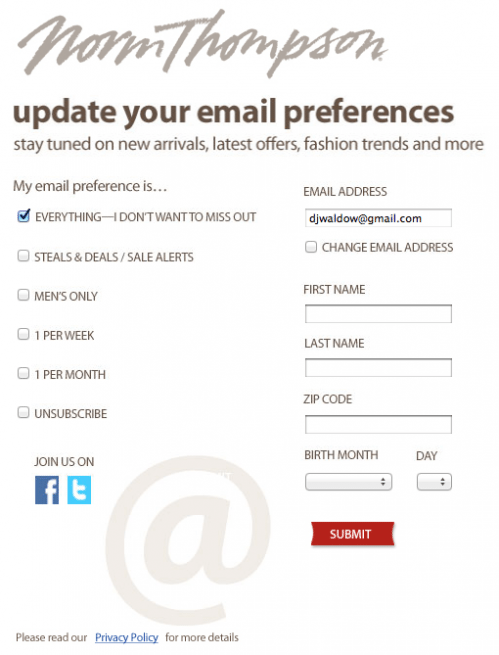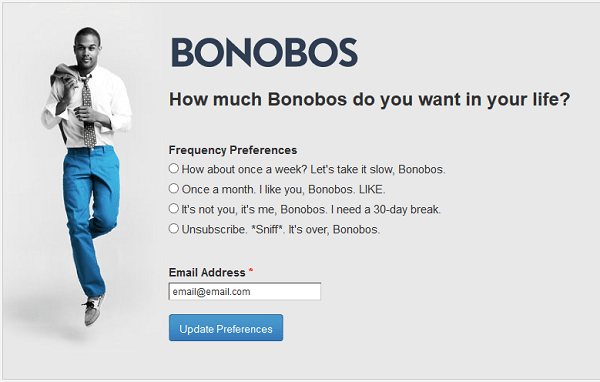
In working with a variety of companies in email optimization, I’ve noticed the challenges each company face are unique, yet the solutions- fundamentally similar. While the assumption for many industries is that quantity trumps quality (i.e., sending a high frequency of email campaigns to the masses in hopes of subscribers itching to click), this does not always equate to success, rather impedes the ROI of a campaign. In fact, many times email marketers find themselves struggling to improve the success of their email program due to key decision makers being unaware of how email functions today.
In the last 15 years, the email game has drastically changed as sending etiquette now influences the way subscribers can actually receive emails to their inbox. This etiquette is dictated by evolving algorithms of major mailbox providers which filter email they quantify as “spam” from entering subscribers’ inboxes. In a recent Return Path article, Saying Goodbye to Increase Your ROI, we discussed how continually sending to disengaged subscribers retrains the mailbox provider that you may be a spammer, and thus, reserves a one way ticket straight to the spam folder of even your most engaged subscribers. In this article, we will discuss how to replace disengaged subscribers by refocusing the attention on industry wide best practices in retaining and reaching new subscribers.
Inherently, for many email marketers, the notion is to prevail by closing old doors in order to open new doors and unlock new potential. This makes for difficult conversation between metric measuring marketers and their executives when scrambling to provide realistic, cost-effective solutions for potential loss due to inactive email addresses. While it is common to have a disconnect between email marketing teams who stand wary of these filtering methodologies and their executives who view email as one of many tools used to communicate with clients to reach revenue goals- this gap in thinking can easily be bridged.
Bridging the gap: knowing the value of a subscriber
For a quick formula to determine the value of each of your subscribers, take a peek at this equation and supply with your metrics:
In a world of negotiating, knowing the value of a subscriber should stand as a non-negotiable. If the assumption is that an email marketing department’s budget is largely based on the amount of conversions sourced from email campaigns, then knowing how many engaged subscribers a company must have to reach this threshold sets the pace for the year’s sending road map.
Furthermore, this bridges the gap of a marketer to a key decision maker’s communication by realizing that if sending to “1” disengaged subscriber valued at $20 alters the filtering methodologies of mailbox providers and therefore obstructs deliverability to 10 “engaged” subscribers, then ultimately $20 was spent for a $200 deficit. It would then financially make sense to place greater spend on retaining engaged subscribers and reaching new ones.
Frequency focused on retention
The current modus operandi for many companies is that once subscribers click “accept” after a brief sign-up process, they have given the company the right to contact them at a frequency determined by that company. This often times creates disengagement yielding deferred inbox placement due to subscribers feeling unheard.
To determine the frequency in which subscribers demand your campaigns, a simple solution is to be transparent in your welcome message by informing how many and what type of content the subscriber can expect to receive. In conjunction to this, linking your preference center or including options within your creative is also highly instrumental.
Don’t fret if you didn’t do this from the get go. In addition to your welcome series, identify subscribers who are starting to fall off into the disengaged category and send preference options before they fall into a category of attrition. It is better to give options than to lose subscribers completely or have them become inactive and further jeopardize deliverability to your engaged subscribers. Let’s take a look at some winning examples below:
Through optimizing frequency preferences and being upfront about content, companies are enabled to account for the demand of campaigns per subscriber so they can, in turn, accurately predict their potential earnings year over year. On the same token, this also allows companies to better gauge what should be spent on discounts and loyalty.
What is your value proposition?
Understanding the expectations of your subscribers and meeting these expectations is the key to capitalizing from your email program. Consider a business model where people demand content. In this scenario, you wouldn’t want to push transactional email as your main or sole mail stream- even if these have lower spending margins, your potential earning efforts would not be met. Additionally, a large differentiator between the success of one company from another is how the subscriber values their relationship with a company.
At the end of the day, regardless of the content expected, a subscriber will always value saved time and money. If your campaigns provide customers with the ability to see what you have to offer quicker—that meets both of these demands. Consider the following subject line and pre-header examples. Notice how they are straight to the point and include their call to action, thus saving a subscriber both time and money:
Out with the old, in with the new
While it can take time and metrics for a meeting of the minds to occur amongst a marketing and executive team regarding the suppression of inactive subscribers, the goal of attracting new subscribers is a concrete commonality. In a recent study presented by Return Path, we noted that between 50 percent and 80 percent of email performance is based on the quality of a list. To reach these quality subscribers, in some verticals, marketers have been twice as effective at turning web traffic into subscribers.
With this in mind, including prominent email signup forms in a variety of locations on your website is a strong way to attract these quality subscribers. Be sure to place these sign up forms in a variety of key locations such as:
- A lightbox on your homepage. Try A/B testing different enticing offers to see which lands more opt ins.
- The top of your sidebar
- On different pages (especially your About page)
- At the end of blog posts
Be sure to also leverage social media to post about email only offers that link to an email signup form.
Want to learn more information on how to retain subscribers and reach new ones? Contact Return Path for ways to leverage our services and strategies.






